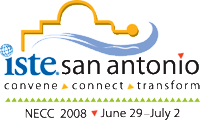 How can technology and innovation reshape education? Union Square Ventures put on Hacking Education – a conference that brought educators and entrepreneurs together to hash this out. Unfortunately they didn’t have any practitioners from the education technology and publishing industries there. After reviewing the well written summary of the discussion I put together the following extended comment to add the perspective of someone who was there, did that, and got the t-shirts.
How can technology and innovation reshape education? Union Square Ventures put on Hacking Education – a conference that brought educators and entrepreneurs together to hash this out. Unfortunately they didn’t have any practitioners from the education technology and publishing industries there. After reviewing the well written summary of the discussion I put together the following extended comment to add the perspective of someone who was there, did that, and got the t-shirts.
As someone who has spent the last 18 years in the Education Technology and Instructional Materials businesses I feel the commentary misses the mark from a business perspective. This isn’t a critique of what was was covered – many of the participants are people I admire and cite frequently – Danah Boyd, Fred Wilson, Katie Salen, Steven Johnson , NT Etuk etc. It is meant to talk specifically about the business challenges of translating these great ideas into practice.
It might be tempting to dismiss folks who have been in the trenches as old school – people who “don’t get it” – but some of us are not clinging to old paradigms but working hard to create new ones. Experience may blind us to new possibilities – but it may also guide you around some of the land mines many of us have already stepped on.
 The Education Business Blog
The Education Business Blog


 This article is based on notes from a panel at the
This article is based on notes from a panel at the  What impact will the
What impact will the  What are the prospects for raising capital for education technology companies in the current financial meltdown? Last week at the
What are the prospects for raising capital for education technology companies in the current financial meltdown? Last week at the  Rookies in the education market make a set of common mistakes. There are five concepts you need to grasp about selling to schools that will help you avoid execution error as you enter the learning market. Consider these the iron laws of marketing to public schools. Accept them, nay embrace them, and your job will be easier.
Rookies in the education market make a set of common mistakes. There are five concepts you need to grasp about selling to schools that will help you avoid execution error as you enter the learning market. Consider these the iron laws of marketing to public schools. Accept them, nay embrace them, and your job will be easier. As print and technology products in education blend together the distinctions between textbook publishers and ed-tech providers are blurring in some very interesting ways.
As print and technology products in education blend together the distinctions between textbook publishers and ed-tech providers are blurring in some very interesting ways.
 How will the economic downturn affect education budgets? How are executives at publishing houses and education technology firms planning for the recession?
How will the economic downturn affect education budgets? How are executives at publishing houses and education technology firms planning for the recession? What do large school districts need from ed-tech providers?
What do large school districts need from ed-tech providers?